The 6 Most-Asked Batman Questions, Answered
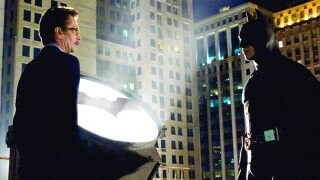
For over 80 years, Batman has evolved and changed while still being one of the biggest forces in pop culture. This week, Cracked is doing a deep dive into the Dark Knight.
We're giving away four pieces of art from legendary Batman creatives Alex Ross and Frank Miller courtesy of our friends at The Haul. Enter your email below for a chance to win and learn more here.
Don't Miss
Being a Batman fan requires a lot of mental gymnastics. When a character has been around for over 80 years and has had hundreds of different writers and artists give their own takes, many questions regarding the Caped Crusader will pop up. Unfortunately, some of these questions are ones that Batman fans keep to themselves since there either appears to be no clear answer, or they yada-yada them out of embarrassment, so they aren't seen as a fake fan.
Brief side note: There's no such thing as "fake fans" in anything. Lack of knowledge or not, don't let anyone tell you that you're enjoying a piece of media "wrong." Gatekeeping is the dirt worst and should be pummeled like a mugger in Crime Alley. Don't do it and let people enjoy things.
With that PSA out of the way, there are a bunch of different common "dumb" Batman questions with answers that even the most ardent fans don't know, won't know, or just can't know. Here are a few of those questions, along with some answers (and non-answers) to them ...
Where Is Gotham City, Actually?
We all know that Gotham City is fictional, but many wonder where in the U.S. it would reside. Many casual fans of DC movies, TV, and comics consider Gotham "New York City" and Metropolis "New York City with even MORE gentrification," but that's a cop-out. There are also fans that consider Gotham to be Chicago since that's where the majority of the on-location scenes of Christopher Nolan's Dark Knight Trilogy were shot, along with several scenes for 2022's The Batman.
However, it was established in a 1978 syndicated World's Greatest Super Heroes newspaper comic strip that Gotham City is located in, of all places, New Jersey.
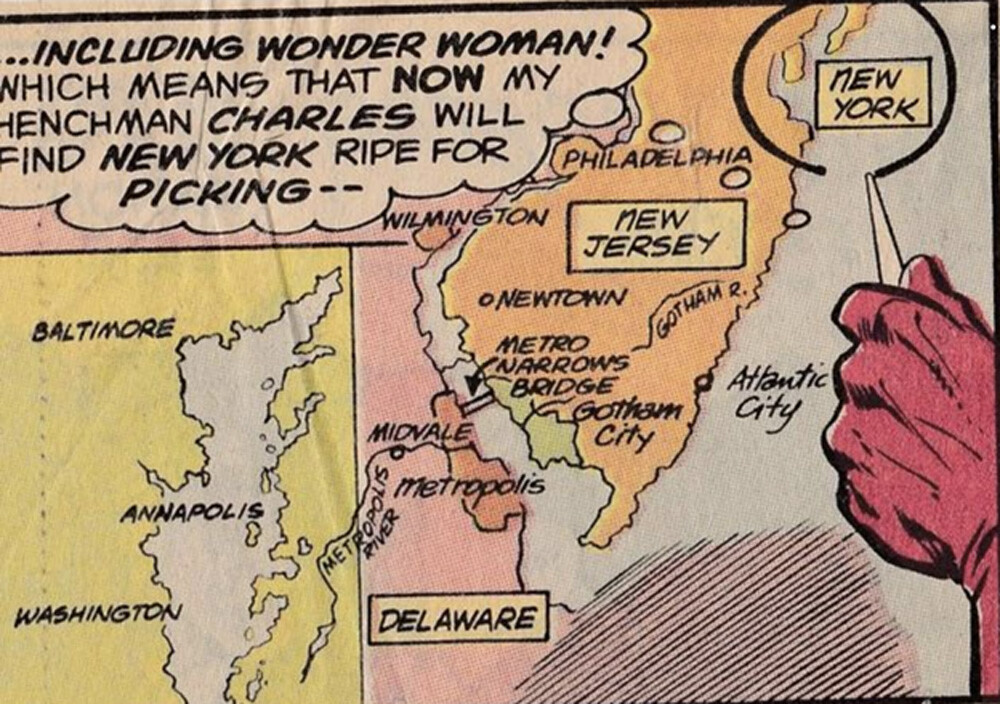
DC
Remember in Batman v. Superman: Dawn of Justice (yes, I am using the whole title) how Metropolis and Gotham were right next to each other? It may have felt weird, but technically, canonically, they are separated by a bay between New Jersey and Delaware. The reason these two cities exist alongside New York, Chicago, and other real cities is that the DC Earth is slightly bigger than ours.
If Gotham was just a city in Jersey, why is it always compared to New York? While it's no secret that the majority of the Batman stories gave Gotham a New York feel, it was literally mapped out like Manhattan Island for the 1999 Batman story arc No Man's Land.
But in the end, Batman isn't a New Yorker or a Cubs fan. He's a Jersey Boy.

Miramax Films
Does Batman Use Guns Or Kill?
The answer is "no" to both.
And "yes."
To both.
When Batman first appeared in 1939, he wasn't shy of outright murking waves of nondescript gangsters. Batman thief– er, "sole creator" Bob Kane claimed to have his stories inspired by popular pulp heroes like The Shadow and The Green Hornet at the time. This meant that Bats wasn't much nobler than the very criminals he fought against.

DC
Bats also wasn't afraid to use guns like those aforementioned pulp heroes in a "fight crime with other crime" fashion.

DC
So, where did the modern Batman "no killing" policy come from? Two men made that decision. First was comics editor Whitney Ellsworth, who started a "no guns" policy and later implemented an overall "no killing" policy for all superheroes due to complaints from parents. The other guy was Fredric Wertham, and his book Seduction of the Innocent, which criticized comic book violence and claimed comics overall caused juvenile delinquency. This spawned the Comics Code Authority (CCA), which policed funny books to be more "child friendly."
Officially, Batman #4 was when Batman first verbalized his "no killing" edict to Robin, as he ordered the boy he was endangering to use the flat end of a blade during a sword fight against pirates.

DC
From then on, the "no guns" and "no killing" rules were merged within most of the Batman mythos to varying degrees depending on who was writing the stories, when they were written, and who the intended audience was. Killing and firearms are a big no-no still in most media aimed toward kids, but there are several adults who grew up on those kid Batman stories that now write Batman Rules™ into their "for ages 16 and up" Caped Crusader comics to create additional inner conflict.
There are decades-worth of stories like Batman: Ego, where Bruce Wayne mentally struggles to keep the "no killing" rule to prevent himself from becoming the very thing he hated and fought against, preventing his sociopathy from developing into full-blown psychopathy.
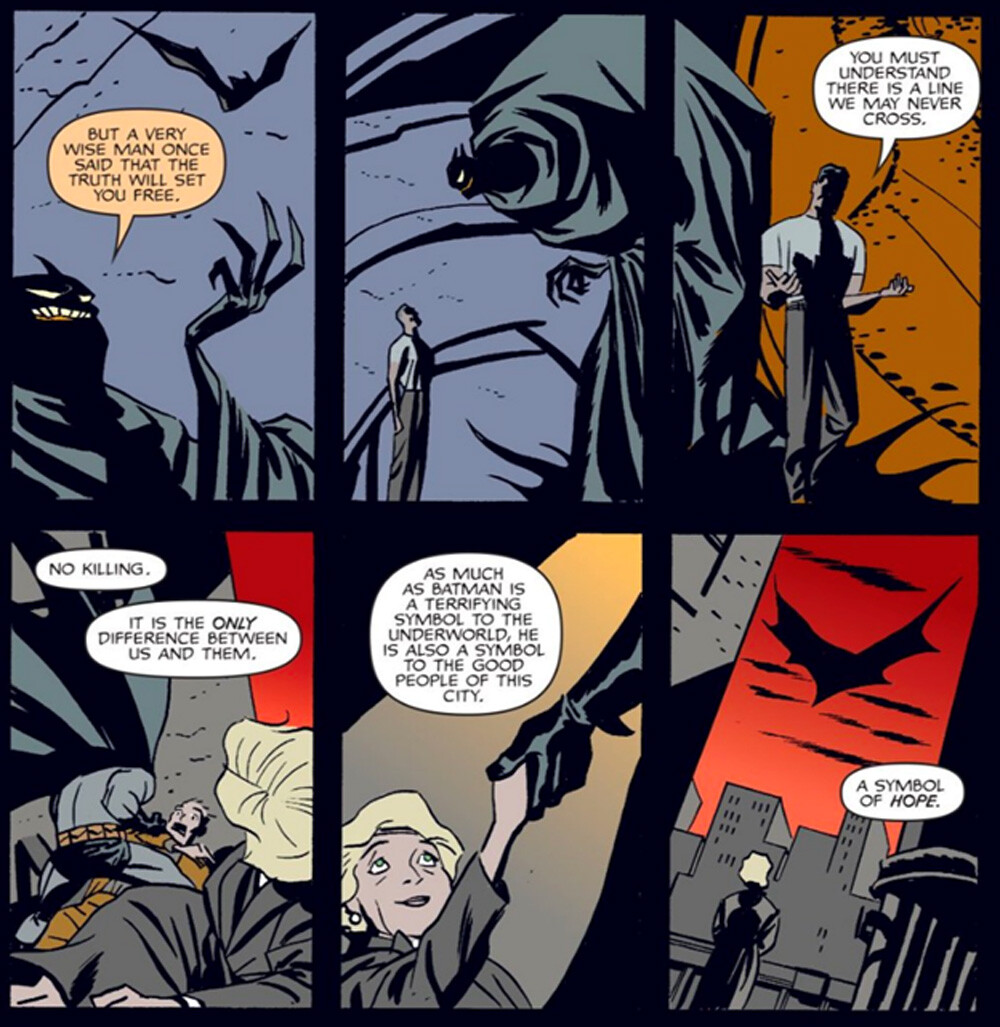
DC
Or in shows like Batman Beyond, in which Bruce Wayne quits being Batman for merely holding a gun.
On the other hand, some writers who were writing for a wider, more grown-up audience would fudge or toss out the no-kill rules. There are many stories in which Batman kills via technicality or lack of restraint.
Or with firearms, knives, and whatever he damn well wants.
Or by sealing a man in an underground room so he can starve or suffocate to death just because Batman didn't feel like fighting him.

DC
So does Batman use guns or kill? The answer is a resounding "sometimes."
Is Batman Allied With The Police?
This question comes up often because it all depends on where the person's Batfandom originated. If you watched the 1966 TV series reruns, Batman and Robin are deputized members of the Gotham City Police Department. If you started your journey reading Batman: Year One, you'll see that Batman is fighting both cops and criminals in equal measure.
Aligned with the "no guns, no killing" rules, the CCA wanted Batman to work alongside the GCPD in the comic book stories so that police weren't misconstrued as villains. They also wanted them portrayed as competent, incorruptible public servants that are beyond scrutiny because the system works, so pay your taxes like a good boy and don't cause any trouble, or we'll plant drugs on you because we have an arrest quota to fill.
But with every instance of Batman shaking hands with a cop, there is one of Batman separating that cop's shoulder from its socket. It all depends on whether the story's police force is siding with protecting the public or shielding the corrupt powers that be. In a 2021 story, Future State: Dark Detective, Bruce Wayne fights the police since they were surveilling Gotham citizens using drones and other tech.

DC
That said, the usual status quo is that Batman works with some of the police. Primarily Commissioner Gordon and occasional police allies that feel that the GCPD is compromised by corruption, bureaucracy, ineptitude, lack of resources, etc. Batman can't be officially aligned with the police because … well, laws and rights.
But the story to the Gotham press is that the Bat-Signal is just the police using the threat of Batman as a deterrent, not an actual call to Batman (even though it totally is). Basically, Commissioner Gordon welcomes Batman's help even if many cops under him protest and resent it, but leaves himself probable deniability so the media can't outright prove their collaboration. This is also so Gordon can't get in major trouble if Batman ends up just being a crazy man in a mask (which he clearly is).
So the answer to this question is a definite "sort of."
Why Does No One Suspect Bruce Wayne Is Batman?
When you read the name "Elon Musk," what are you picturing?
Are you picturing a billionaire that went into space? The real-world Tony Stark? A tech genius? A man that wasn't a founder of Tesla but its 4th CEO? Or a guy that got a head start thanks to his dad's emerald mine? Did he actually invent anything or just bankroll everything and buy the actual creators' credit?
This similar media ambiguity is partially why the public doesn't connect Bruce Wayne with Batman. Bruce Wayne's public persona is a billionaire playboy that flirts with philanthropy along with the ladies, even though he prefers to spend his nights collecting the tracheas of every criminal he sees. The media can and has reported on both the facade and the truth, so it's blurred like Musk's.
Also, when you have a lot of money, you can pay off reporters to either look the other way or hire a rival publication to write a different story. Hell, at one point, Bruce Wayne even owned Metropolis' Daily Planet.

DC
But after a few years of established Batmanning, Bruce Wayne doesn't have to worry too much about anyone connecting him to Batman. The general public is either grateful for Batman protecting them or grateful to Bruce Wayne's company providing charitable funding, jobs, and other things to Gothamites. Or they're just too busy with their own lives and can't be bothered to care, much like most of you are too busy to give a damn about Elon Musk one way or the other.
The police see Batman as a guy making their jobs easier or a guy that'll break their arm, so they shouldn't bother him. In most stories, Commissioner Gordon seems to know who Batman is but does his damnedest to be able to deny it so he won't be held accountable. He treats Batman's identity like a child who still wants to believe in Santa Claus, even though Santa smells like the Ralph Lauren Polo Cologne and Macanudo cigars that grandpa likes.

DC
But what about the villains? While some are too dumb to figure out the Bruce Wayne/Batman connection, Ra's Al Ghul, Professor Hugo Strange, Bane, Amanda Waller, Deathstroke, and so many others do. The majority of them don't bother Bruce Wayne, though. Why? Two reasons.
First, many of them, like the Joker, just don't care about who the person behind the mask is, even if it is Bruce Wayne. They know that the real person they care about is and always will be Batman.

DC
The other reason is … well, I'll let Batman explain it to Riddler.

DC
Basically, if Bruce Wayne is revealed to be Batman to everyone, then knowing his identity isn't special anymore. Given the egos within Batman's rogues gallery, they'd want to keep that tidbit to themselves as a means to gain an advantage over him in the end before someone else does. It's worthless if it's something everyone knows.
Plus, with enough money, you can control whatever narrative you want by silencing the right people with cash or fear (like Musk?). So basically, the question isn't "Why Does No One Suspect That Bruce Wayne Is Batman?" but "Does It Matter If Anyone Knew Bruce Wayne Was Batman?"
Speaking of identities …
So Who Actually Is The Joker?
It's Jack Napier.
Or some random guy.
Or it's three people.
Or it's Arthur Fleck (It's not Arthur Fleck).
In Batman (1989), Batman: The Animated Series, and in some comic book stories like Batman: White Knight, The Joker was an old school wiseguy crook named Jack Napier that fell into a vat of chemicals to transform into the Clown Prince of Crime. Yet to many, that's not the canon answer.
In The Dark Knight, the Joker's true identity is never revealed. In fact, his face is just makeup. Plus, whatever little origin we have of him in the movie changes, whether it's his father causing the scars on his mouth or his mad attempt at cheering up his wife. In that film, he's portrayed as a force of chaos, not a person.
Basically, The Joker's identity has never been 100% confirmed in the comics. In The Joker's main comic book origin, he is established as a different criminal, the Red Hood (who is actually a helmeted character, but moving on). He was thwarted by Batman and fell into a vat of chemicals. Unlike in Batman's debut, the vat of chemicals didn't kill the criminal that fell into them but made him discolored and disfigured. Thus Joker was born.
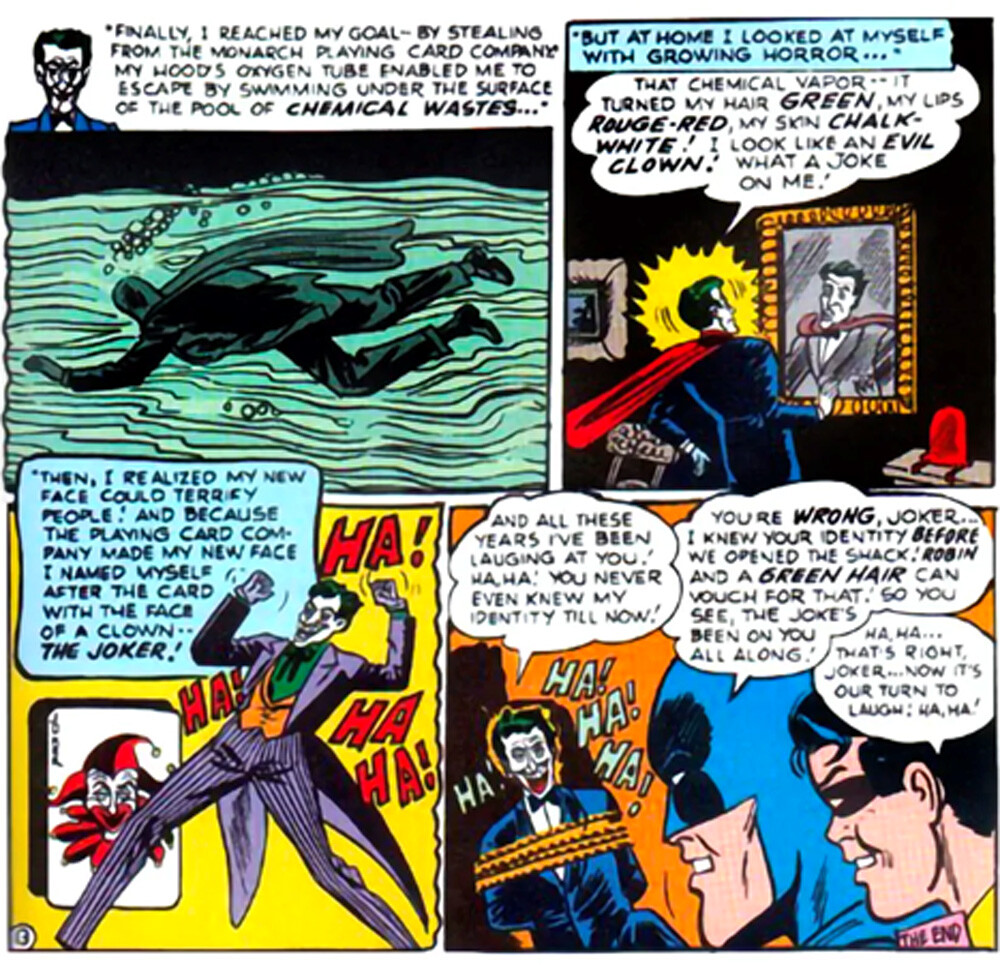
DC
However, since no one knew who The Red Hood was, some felt The Joker origin story needed an origin story itself. While there are other retellings in this first origin, some of which said that Joker was a lab worker who adopted the Red Hood persona to turn to crime, others saying he was a gangster that was always the Red Hood, etc. the most popular Joker origin seems to come from Alan Moore and Brian Bolland's Batman: The Killing Joke.
In The Killing Joke, the readers are treated to flashbacks of what could be The Joker's past. After all, even in this story, The Joker admits that he'd prefer his origin to be "multiple choice." In this take, The Joker was an engineer who quit his job to become a stand-up comedian. However, with his comedy career stalling, his wife getting pregnant, and podcasting not existing until 2004, he needed to do something to make money.

DC
He agreed to help two crooks break into the chemical factory where he worked so they could rob the playing card company next to it. As we all know, playing card companies are flushed with cash inside. The crooks gave the engineer a Red Hood outfit, which was an open-source identity for any criminal to use.
However, the man-who-would-be-Joker tries to back out of the plan after the police inform him that his wife and unborn child died from a baby bottle heater accident.
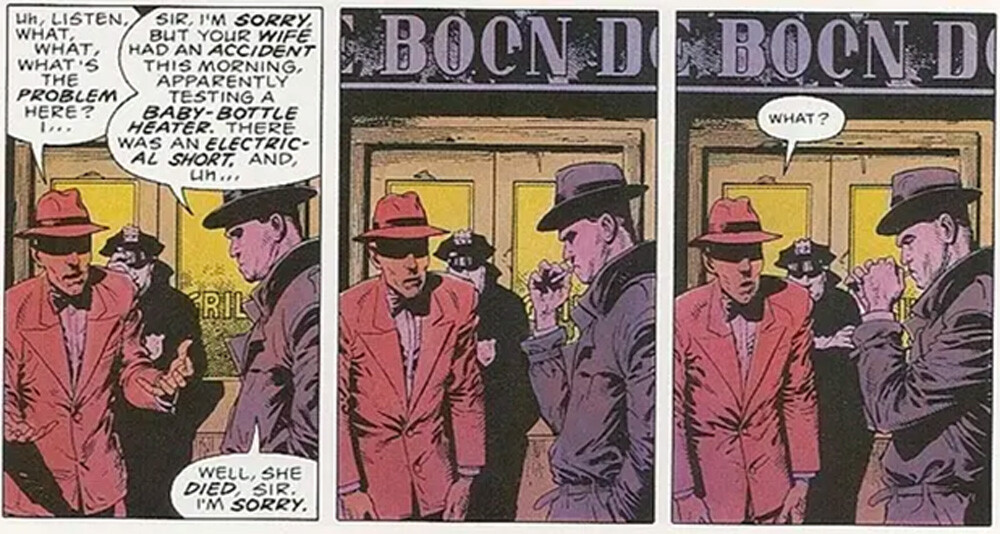
DC
In spite of not having a reason to do the robbery anymore, the two crooks force the engineer to commit to the plan. The rest plays out like the original Joker origin, with the Red Hood falling into chemicals and so on.
Then there's the Batman: Three Jokers story. Remember how Batman went from killing to not killing, along with other tonal shifts over the character's published life? The same with the Joker. In his first stories, The Joker was a ruthless and cold killer, oddly serious in spite of his jester appearance. After the Comics Code Authority took over, Joker became less of a criminal and more of a jolly prankster like in the 1966 TV show. When the CCA backed off, he turned into a hybrid of the two, a laughing psychopathic killer. The Three Jokers story revealed that in Batman's history, there were three different people with those three different personalities using The Joker persona.
The final explanation, though, is that the "real" Joker was the modern giggling lunatic murderer who created the other two Jokers as clones made in chemical baths and were fed memories to create confusion. But then, at the end of the story, Bruce Wayne reveals to Alfred that he already knew The Joker's true name and identity. In fact, he learned it a week after they first encountered each other. Why did he keep it hidden for so many years? To protect The Joker's now ex-wife and son.

DC
In a retcon, Joker's wife and unborn child didn't die in a household accident but secretly fled from him, implying that before he got Juggaloed, Joker was an abusive partner.
So much like how it doesn't matter who knows that Bruce Wayne is Batman (even The Joker confirmed in The Three Jokers that he knew), it sort of doesn't really matter what name The Joker used to go by before he got a clown-soaking chemical bath.
Wait, Didn't Batman Die?
All of the time.

DC
He got better.
Top image: Warner Bros.
